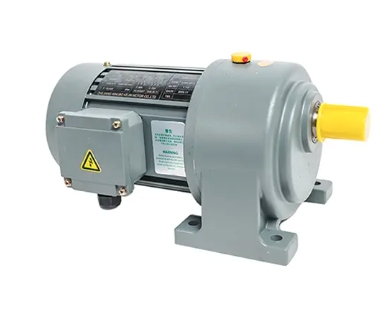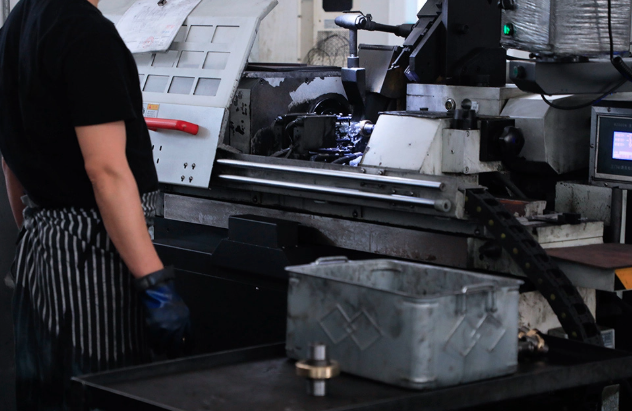- All
- Product Name
- Product Keyword
- Product Model
- Product Summary
- Product Description
- Multi Field Search


Views: 0 Author: Site Editor Publish Time: 2025-09-30 Origin: Site










Servo gearmotors are the heartbeat of many automated systems. From CNC machines to robotics, they ensure precise movement, accurate positioning, and consistent performance. Even the most reliable motors, however, can fail over time. Recognizing early warning signs of servo gearmotor failure helps prevent costly downtime and severe damage. In this guide, we explore nine key indicators that your motor may be approaching failure and show how to detect issues before they escalate.
Strange sounds are often the first indicator of problems. Servo gearmotors typically operate quietly, so any abnormal noise deserves attention.
Grinding – Usually comes from worn bearings, gear teeth, or misaligned shafts.
Clicking – Can indicate loose internal components or backlash in the gearbox.
Buzzing – Often caused by electrical interference, motor vibration, or loose wiring.
Inspection Tips:
Run the motor at low speed and listen carefully.
Use vibration sensors to detect subtle internal movement.
Compare the sounds to a new or healthy motor if possible.
Quick Table: Noise Type vs Possible Cause
| Noise Type | Likely Cause | Action Needed |
|---|---|---|
| Grinding | Bearings, gears | Inspect bearings, lubricate, replace if worn |
| Clicking | Loose parts | Tighten screws, check gear alignment |
| Buzzing | Electrical interference | Inspect wiring, control signals |
Pro Tip: Early noise detection can prevent catastrophic gear or bearing failure.
Excess heat is a critical warning. Motors are designed to dissipate heat efficiently, but blocked airflow or excessive loads can quickly cause problems.
Causes: Overloading, blocked ventilation, friction from worn components, or degraded lubrication.
Indicators: Motor shuts off unexpectedly, casing becomes unusually hot, or thermal trips activate frequently.
Prevention Tips:
Ensure sufficient airflow and proper ventilation.
Avoid running the motor above its rated capacity.
Inspect bearings and brushes regularly.
Visual Aid Idea: Thermography image showing hot spots on a motor casing to identify heat accumulation.
Extra Tip: Continuous overheating can degrade insulation and lead to short circuits over time.

Gearmotors should move smoothly and precisely. Any irregular or jerky movement signals a potential failure.
Symptoms: Sudden stops, jittering, delays, or inconsistent speed.
Causes: Encoder errors, feedback loop failure, damaged gears, or misaligned mechanical components.
Detection: Monitor position data or torque output in real-time.
Key Tip: Log the motor’s movements via the control system to spot sudden deviations or irregularities early.
Extra Info: Jerky movements often precede mechanical breakdowns such as stripped gears or loose couplings.
A motor that draws more current than normal is likely compensating for internal problems.
Causes: Friction from worn bearings, electrical short circuits, degraded windings, or misaligned components.
Monitoring: Measure amperage under normal load conditions regularly.
Chart Idea: Line chart showing progressive current draw increases over time, highlighting early warning trends.
Pro Tip: Sudden spikes in current often occur weeks before mechanical failure, providing a window for preventive action.
| Aspect | Details |
|---|---|
| Description | A motor that draws more current than normal is likely compensating for internal problems. |
| Causes | Friction from worn bearings, electrical short circuits, degraded windings, or misaligned components. |
| Monitoring | Measure amperage under normal load conditions regularly. |
| Chart Idea | Line chart showing progressive current draw increases over time, highlighting early warning trends. |
| Pro Tip | Sudden spikes in current often occur weeks before mechanical failure, providing a window for preventive action. |
Vibrations are a classic sign of mechanical stress. A failing servo gearmotor may wobble or have excessive play in the shaft.
Causes: Worn bearings, rotor imbalance, misaligned couplings, or mounting issues.
Symptoms: Visible wobbling, unusual vibration during high-speed operation.
Inspection Checklist:
Inspect bearings, couplings, and rotor alignment.
Check shaft using a dial indicator.
Consider vibration sensors for continuous monitoring.
Extra Tip: Long-term vibration can damage connected machinery and accelerate overall system wear.
The encoder provides crucial feedback about motor position, speed, and direction. Malfunctions can disrupt the entire control system.
Signs: Inconsistent position feedback, overshooting, or lost signals.
Causes: Dirty disks, cable damage, or electronic component failures.
Maintenance Tips:
Clean encoder regularly with soft, lint-free cloths.
Check cable integrity and secure connections.
Inspect for proper alignment and mounting.
Table: Encoder Issue vs Symptom
| Issue | Symptom | Action |
|---|---|---|
| Misalignment | Incorrect position | Adjust encoder |
| Dirty disk | Erratic movement | Clean with soft cloth |
| Damaged cables | Lost feedback | Replace cables |
Extra Tip: Encoders are sensitive; even slight misalignment can lead to costly positional errors.
Thermal switches, fuses, or circuit breakers that trip repeatedly indicate stress.
Causes: Overloading, short circuits, overheating, or mechanical obstruction.
Check: Operating load, wiring integrity, and motor temperature.
Pro Tip: Frequent trips should never be ignored—they often precede complete motor failure.
External signs often reflect internal problems. Even minor leaks or corrosion can hint at bigger issues.
Indicators: Oil or grease leaks, rust, frayed wires, damaged seals.
Causes: Contamination, lack of maintenance, or environmental exposure.
Prevention: Clean regularly, replace worn seals, and use protective covers.
Illustration Idea: Annotated motor diagram showing common wear points.
Extra Tip: Regular visual inspection can catch problems before performance drops.
Servo gearmotors work closely with controllers and PLCs. Fault codes often signal motor issues.
Signs: Unexpected error messages, intermittent communication, sudden stops.
Causes: Damaged control signals, software glitches, encoder failure.
Actions: Refer to the manufacturer’s error code guide, update software, inspect wiring.
Pro Tip: Logging and trending errors can help identify recurring issues before physical damage occurs.

The key signs include unusual noises (grinding, clicking, buzzing), overheating, jerky or erratic movement, increased power consumption, vibrations or mechanical play, encoder malfunctions, frequent protection trips, physical wear and tear, and control system errors. Spotting these early helps prevent costly downtime.
Regular preventive maintenance, proper installation, keeping the environment clean, monitoring temperature and load, and checking wiring and feedback systems can extend motor life. Using motors within their rated capacity is essential.
Minor issues like loose connections or debris in the encoder can sometimes be addressed. However, professional repair is recommended for internal components, bearings, windings, or electronics to avoid further damage.
If your motor has severe damage such as burnt windings, broken encoder systems, or repeated electrical failures, replacement is more cost-effective. Older models may also lack compatibility with modern control systems.
A motor drawing more current than normal often works harder due to friction, worn bearings, short circuits, or degraded windings. Monitoring amperage trends can reveal early signs of internal wear.
The encoder provides position, speed, and direction feedback. If it fails, the motor may move erratically or lose accuracy. Cleaning, inspecting alignment, and checking cables help prevent encoder-related issues.
Recognizing the 9 warning signs of servo gearmotor failure allows you to act early, preventing expensive downtime. Strange noises, overheating, jerky motion, and encoder issues all signal potential problems. Regular monitoring, preventive maintenance, and proper installation extend motor life. For high-quality servo gearmotors and expert support, Qingdao Chinese Science Machinery Co., Ltd. provides reliable products, guidance, and repair services to ensure your operations stay running smoothly. We also offer an extended warranty period for all our products, giving you worry-free after-sales service and peace of mind. Acting quickly on these signs saves time, reduces costs, and avoids major equipment failures.